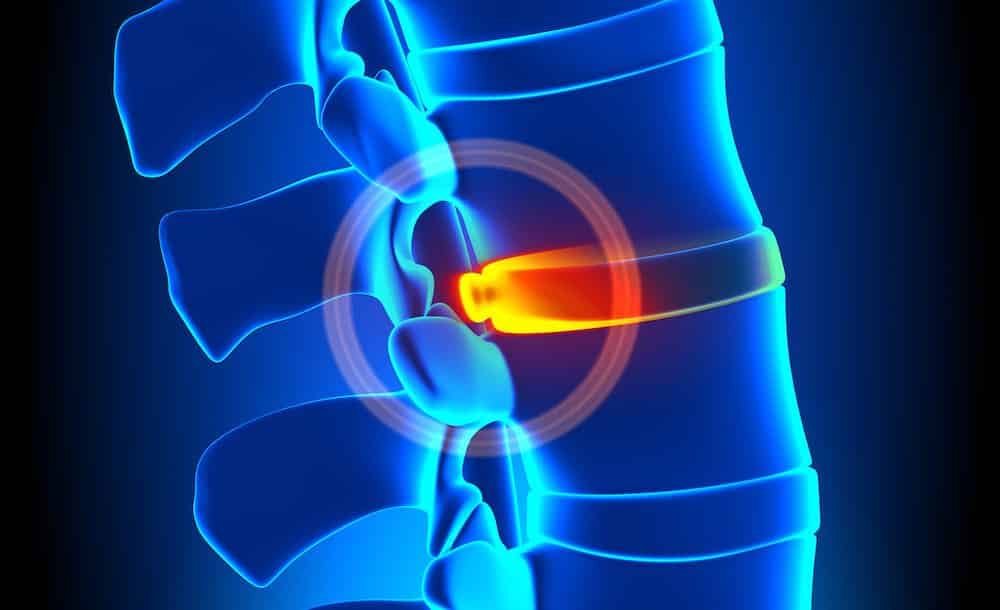The intervertebral discs are commonly thought of as the shock absorbers between the vertebrae (bones) of the spine. In truth they are very important and complex structures within the vertebral column. Interestingly 88% of a child’s disc and 70% of an adult’s disc is water. Discs will even loss water during the course of a day and then reabsorb it at night. This explains why people are 1% shorter at the end of the day than they were in the morning.
Discs have an inner sphere which is made of a material some liken to a gel. This is called a nucleus pulposus. Surrounding this is a series of tough outer layers called the annulus fibrosis. This provides the strength to the disc. When a disc is injured it can produce pain itself or it can bulge and press on surrounding sensitive structures that then creates pain either locally or in the case of a nerve root irritation further afield like the leg or arm.
Chiropractic therapy aims to not only help restore normal movement within the spine to aid the repair of an injured disc, it eases the painful protective muscle spasms, reduces nerve root irritation where possible and then rehabilitates the spine by strengthening the surrounding supportive musculature through a series of exercises.

